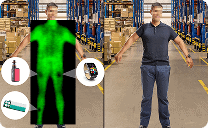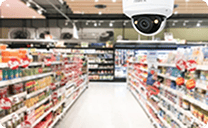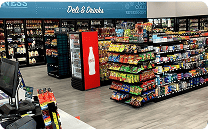In This article
Access control is a fundamental aspect of physical security that determines who is allowed to enter, exit, move, or log in to a specific physical or virtual space and under what conditions. It’s a layered approach that protects people, property, and sensitive information by managing and monitoring access points such as software applications, doors, gates, elevators, or secure zones.
Modern access control systems use digital credentials, such as passwords, access cards, PIN codes, biometric identifiers (like fingerprints or facial recognition), and mobile applications, to grant or restrict entry based on preset rules and schedules. These systems often integrate with alarm systems, visitor management software, and cameras to create a comprehensive security ecosystem.
Types of Access Control
There are several models of access control, each suited to different operational needs:
- Discretionary Access Control (DAC): Access rights are assigned by an individual (typically the owner or administrator) to other users.
- Mandatory Access Control (MAC): In this type of system, a central authority defines permissions based on classification levels, which is common in government and military applications.
- Role-Based Access Control (RBAC): Permissions are assigned based on roles within the organization, streamlining management in larger enterprises.
- Attribute-Based Access Control (ABAC): Access is granted based on a combination of attributes (e.g., time of day, job function, or location).
RBAC is typically the most effective in retail, hospitality, healthcare, and logistics environments. It allows organizations to scale easily and adjust permissions as roles or responsibilities change.
Key Benefits of Access Control Systems
Implementing a smart system provides several business-critical benefits:
- Security: Prevents unauthorized access to sensitive areas such as stockrooms, IT rooms, cash offices, or restricted employee zones.
- Audit Trails: Maintains logs of entry and exit activity, which are helpful for investigations, compliance, or monitoring employee movement.
- Operational Control: Helps manage visitor access, employee schedules, and temporary permissions for contractors or vendors.
- Integration Capabilities: Modern systems integrate with surveillance, alarm, and analytics for real-time situational awareness.
For example, suppose someone attempts to access a restricted area outside of business hours. In that case, the system can automatically trigger a camera, send an alert to management, or lock down additional doors.
AI and Access Control
Artificial intelligence (AI) is increasingly used to strengthen systems. AI can analyze behavioral patterns to detect unusual activity, like an employee accessing an area at an odd time or holding a door open too long. It can also work with facial recognition systems to identify individuals and verify credentials, reducing the risk of card sharing or tailgating.
Cloud-based platforms offer even greater flexibility, allowing businesses to manage and monitor multiple sites remotely. Administrators can revoke access, adjust permissions, and receive real-time alerts, whether on-site or managing dozens of locations across regions.
Considerations for Deployment
While it significantly enhances security, successful implementation depends on:
- Choosing the proper access methods for the environment
- Ensuring privacy and compliance with local regulations (especially for biometric data)
- Training staff to use and manage the system effectively
- Regularly reviewing permissions and audit logs for accuracy
Organizations must also maintain secure data practices since access control systems collect and store sensitive information.
Strengthen Entry Security with DTiQ
Access control is more than keeping doors locked—it is about controlling risk and providing visibility across your entire operation. DTiQ’s 360iQ platform complements access controls with real-time video surveillance, audits, and analytics to give you complete oversight of who is entering your space, when, and why. From single-store setups to enterprise-wide systems, DTiQ helps secure access points, monitor activity, and protect what matters most. To learn more, visit our website.





























